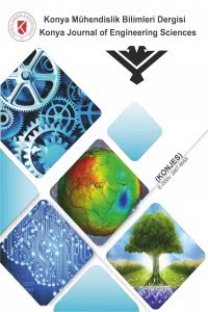Yirmi katlı çelik bir bina çerçevesinin MIGI paralel işlem algoritması ile lineer olmayan dinamik analizi
Nonlinear dynamic analysis of a 20-story steel building frame with MIGI parallel processing algorithm
___
- Bathe, K.-J. (1996), Finite Element Procedures, Prentice-Hall, Englewood Cliffs, N.J.
- Chen, H.-M. (2002), Distributed Object-oriented Nonlinear Finite Element Analysis, Doktora tezi, Purdue University, West,Lafayette, Indiana, USA.
- Dere (2002), "A parallel solution algorithm for nonlinear structural dynamics problems", Doktora tezi, Purdue University, West Lafayette, IN, USA.
- Gupta, A. ve Krawinkler, H. (1999), "Seismic demands for performance evaluation of steel moment resisting frame structures", SAC Task 5.4.3, Report No. 132, The John A. Blume Earthquake Engineering Center, Dept. of Civil and Env. Eng., Stanford University, USA.
- Hajjar, J. F. (1987), Parallel Processing for Transient Nonlinear Structural Dynamics of Three-dimensional Framed Structures, Doktora tezi, Cornell University, Ithaca, New York, USA.
- Hajjar, J. F. and Abel J. F. (1988), "Parallel processing for transient nonlinear structural dynamics of three-dimensional framed structures using domain decomposition", Computers & Structures, 30, 1237-1254.
- Hsieh, S. H. Yang, Y. S., Cheng W. C., Lu, M. D. ve Sotelino E. D. (1998), "MPE++: An object-oriented mesh partitioning environment in C++", Proc. of the Sixth East Asia-Pacific Conference on Structural Engineering and Construction, Taipei, Taiwan, January 14-16, 313-318.
- Newmark, N. M. (1959), "A method of computation for structural mechanics", Journal of Eng. Mechanics, ASCE, 85(EM3), 67-94.
- Rajagopala, M. G. (1996), "Object-Oriented Parallel Second-Order Inelastic Analysis of Frames", Doktora tezi, Purdue University, West Lafayette, Indiana, USA.
- UBC (1994), "Structural engineering design provisions", Uniform Building Code, Vol. 2, International Conference of Building Officials
- ISSN: 1300-5200
- Yayın Aralığı: 4
- Başlangıç: 2018
- Yayıncı: -
Çakırköy civarı (Gökçesu-Bolu) bitümlü kayaçlarının organik jeokimyasal incelemesi
ALİ SARI, Saday Azadoğlu ALİYEV, DERYA KOCA
Sakarya nehri havzası aylık akım verilerinin parametrik olmayan yöntemlerle trend analizi
Nadire ÖZEL, Serdar KALAYCI, Mehmet F. SEVİMLİ, MERAL BÜYÜKYILDIZ
Organik ve pH şok yüklemelerinin ardışık kesikli reaktörlerde (AKR) arıtım verimine etkisi
Tuba ERTUĞRUL, Ali BERKTAY, Bilgehan NAS
Selimiye (Milas, Muğla) kuzeyinde Menderes masifi' nin mesoskopik tektonik özellikleri
TEVFİK AĞAÇAYAK, Veysel ZEDEF, Salih AYDOĞAN
Parametrik olmayan testler kullanılarak Sakarya havzası yağışlarının trend analizi
